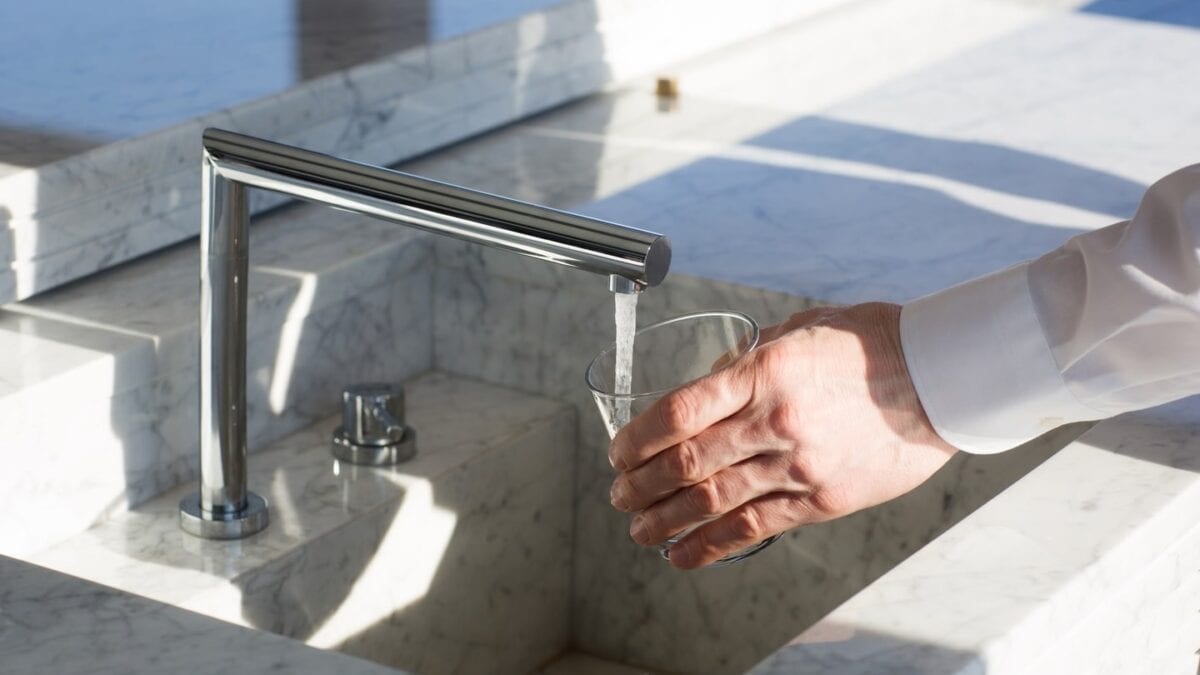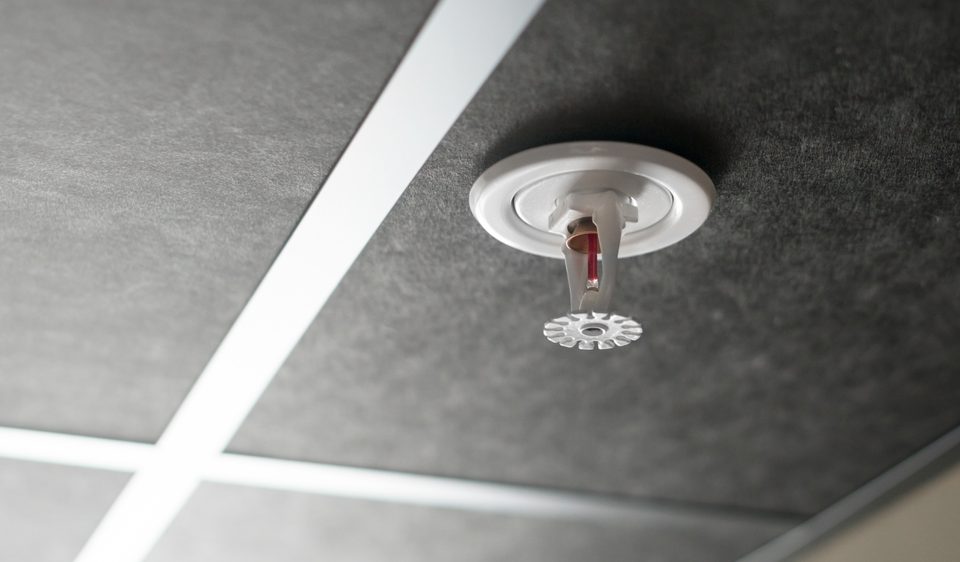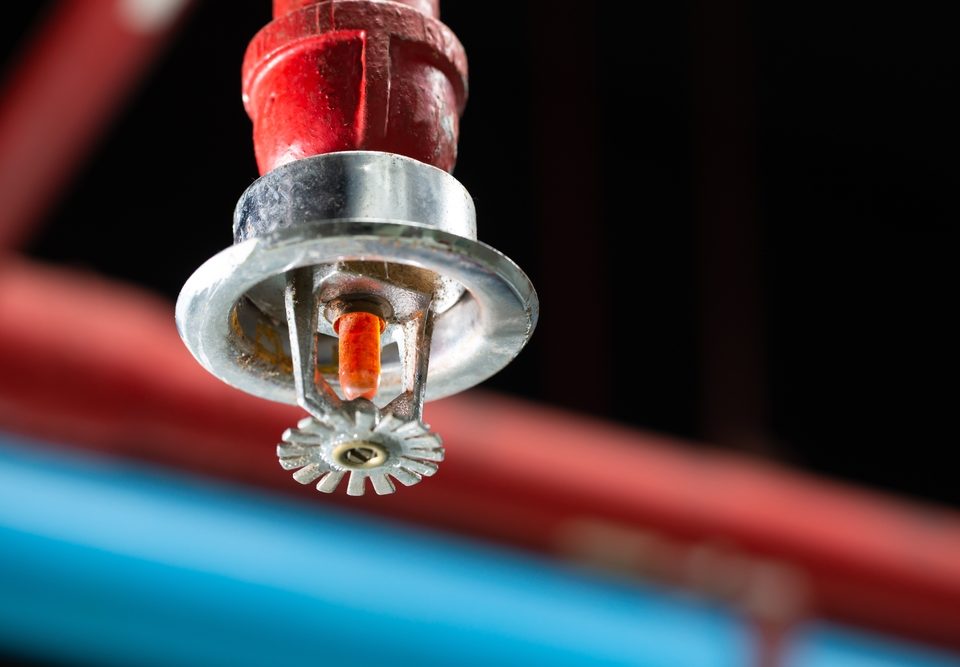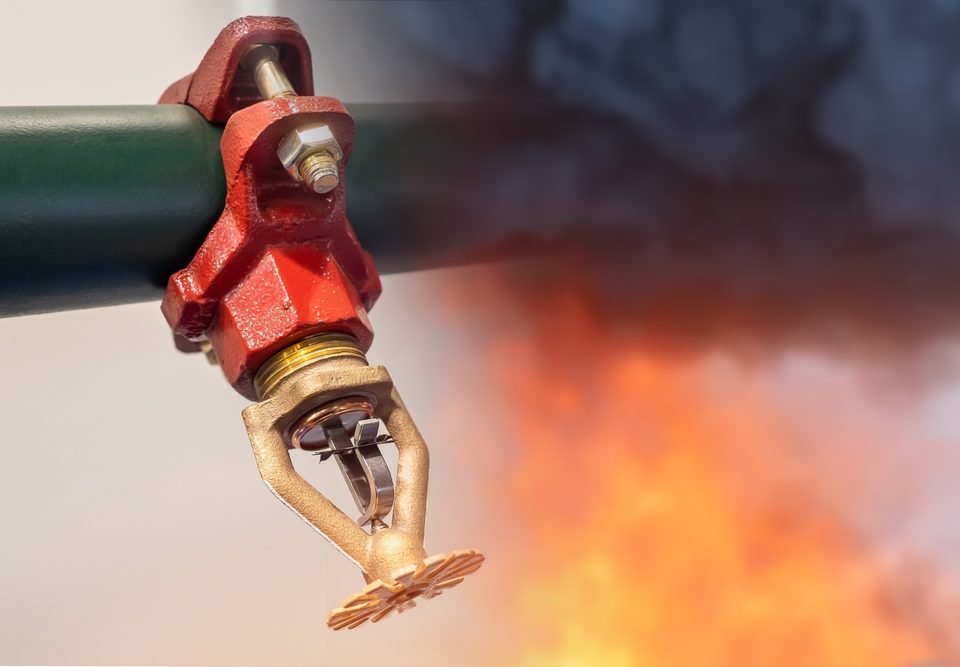
Easy Steps on How to Repair Gas Water Heater at Home
August 15, 2023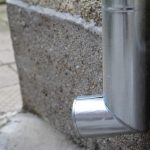
Drain Cleaning Cost: A Guide for Venice FL and Boca Grande
September 11, 2023Frustration sets in as you try everything to get that stubborn faucet to shut off. But fear not! Here, we will dive into the world of kitchen faucets and discover how to fix them when they refuse to cooperate.
Now, let’s explore some common reasons why your faucet might be giving you trouble. One possibility is a worn-out washer that needs replacing. Over time, the constant use of your faucet can cause the washer inside to wear down, leading to leaks and difficulty in turning off the water flow. Another potential culprit could be a faulty cartridge or valve stem, which controls the water flow when you turn the handle. Understanding these possible issues can help in troubleshooting and resolving them efficiently.
But what if none of these solutions work? Well, here’s a real-life story that might give you some hope. Jane had been struggling with her kitchen faucet for weeks; no matter what she tried, it just wouldn’t turn off completely. Feeling defeated, she decided to call in a professional plumber from Babe’s Plumbing Inc. & Fire Sprinklers in Venice, Florida – experts known for their exceptional service. Within minutes of arriving at Jane’s home, the plumber diagnosed a worn-out valve stem as the root cause of her problem. With precision and speed, he replaced it and restored Jane’s faith in her kitchen faucet once again.
So next time you find yourself dealing with a stubborn faucet that won’t turn off, remember there are solutions out there waiting for you. Whether it’s a simple washer replacement or calling in professionals like Babe’s Plumbing Inc., understanding how to fix this common issue will save you time and frustration. With these tips at your disposal, you’ll never have to dread the daunting task of a malfunctioning kitchen faucet again.
Understanding Kitchen Faucets
To understand kitchen faucets, tackle the issue of a faucet that won’t turn off by examining the different types of kitchen faucets and the components that make up a kitchen faucet. This solution will provide insights into the functionality and potential fixes for a malfunctioning faucet.
Types of Kitchen Faucets
When it comes to kitchen faucets, there are various types available to suit different needs and preferences. The right kind of faucet can enhance not only the functionality but also the aesthetic appeal of your kitchen. Here, we will explore some of the different types of kitchen faucets to help you make an informed decision.
One popular type is the single-handle faucet, which allows for easy control of both water flow and temperature with just one lever. This type of faucet is convenient and simple to use, making it a great choice for busy kitchens. Another option is the double-handle faucet, where separate knobs are used to control hot and cold water. This classic style adds a touch of elegance to any kitchen.
If you’re looking for versatility, a pull-out or pull-down faucet may be the way to go. These faucets feature a spray head that can be easily pulled out or down from the spout, allowing for easy rinsing and cleaning of dishes or filling pots with ease. Some models even offer adjustable spray patterns for added convenience.
For those who love modern design and innovation, touchless faucets are becoming increasingly popular. These high-tech faucets use motion sensors to turn on and off, which not only eliminates the need for handles but also helps prevent the spread of germs in the kitchen. They are particularly beneficial when you have messy hands while cooking or when handling raw foods.
Now let’s delve into some unique details about kitchen faucets that you may not have heard before. Did you know that some faucets come with built-in water filtration systems? This feature allows you to enjoy clean and purified drinking water directly from your tap without the need for additional filters or bottles.
In addition, there are also wall-mounted faucets available for those who prefer a more unconventional look in their kitchens. These faucets are installed on the wall above the sink instead of on the countertop or sink itself, adding a stylish twist to your kitchen design.
To illustrate the importance of choosing the right kitchen faucet, let me share a true story. A friend of mine recently renovated her kitchen and invested in a high-quality pull-out faucet. She was amazed at how much it improved her daily cooking and cleaning experience. The convenience of being able to easily maneuver the spray head made tasks such as washing vegetables and filling large pots significantly easier and more efficient.
Components of a Kitchen Faucet
A kitchen faucet is composed of various essential components that work together to provide a functional and efficient water flow. These components include the spout, handles, aerator, cartridge, and valve. Each component plays a crucial role in ensuring smooth water operation in the kitchen.
The spout is the main outlet through which water flows from the faucet. The spout needs to be properly positioned to allow easy access to the sink when washing dishes or filling pots. The length and shape of the spout can also affect the overall design and functionality of the faucet.
Handles are another important component of a kitchen faucet. They control the flow and temperature of water by either twisting or turning them accordingly. Handles with ceramic disc valves are recommended as they are durable and offer precise control over water flow and temperature.
An aerator is a small device attached to the end of the spout. Its purpose is to mix air with water, reducing splashing and conserving water without compromising pressure. A high-quality aerator can also prevent mineral build-up within the faucet, extending its lifespan.
The cartridge is responsible for regulating water flow within the faucet. It controls both hot and cold water supply, allowing users to adjust temperature preferences easily. Opting for a ceramic cartridge is advisable since it offers long-lasting performance with minimal maintenance required.
Lastly, the valve is an integral part of a kitchen faucet as it controls how much water can flow through it at any given time. Choosing a valve made of solid brass material ensures durability and prevents leakage over time.
To make your kitchen faucet more efficient, consider these suggestions:
- Regularly clean your aerator to remove any mineral deposits that may affect water pressure.
- Install a filter system to improve water quality by removing impurities.
- Opt for faucets with multiple spray settings for added versatility.
- Use motion sensor technology for touchless operation, promoting hygiene in your kitchen.
By following these suggestions, you can enhance the functionality and longevity of your kitchen faucet while also enjoying the convenience of modern technology.
Common Issues with Kitchen Faucets
To address the common issue of a kitchen faucet that won’t turn off, this section focuses on providing solutions. Explore the sub-section, ‘Faucet That Won’t Turn Off’, to discover the tips and tricks for fixing this particular problem.
Faucet That Won’t Turn Off
Is your kitchen faucet refusing to turn off? This common issue can be frustrating and inconvenient. The problem may be due to a faulty valve or worn-out seals. To fix it, you can try cleaning the valve or replacing the seals. If these solutions don’t work, it’s best to consult a professional plumber who can accurately diagnose and repair the problem.
In some cases, a faucet that won’t turn off may be caused by a malfunctioning cartridge or handle mechanism. These parts can wear out over time and prevent the faucet from shutting off completely. To resolve this, you might need to replace the cartridge or handle assembly.
Another potential culprit could be a water pressure issue. If the water pressure is too high, it can create excess force that prevents the faucet from turning off properly. In this case, adjusting your home’s water pressure regulator could solve the problem.
Pro Tip: Regular maintenance and inspection of your kitchen faucet can help identify and prevent issues before they become major problems.
Steps to Fix a Faucet That Won’t Turn Off
To fix a faucet that won’t turn off, follow these steps: Shut off the water supply, inspect the faucet handle, check the cartridge or valve, and repair or replace any faulty components. This comprehensive guide will help you resolve the issue and restore your kitchen faucet to proper functionality.
Shutting Off the Water Supply
- Locate the main water valve: Look for a small metal or plastic valve handle near the water meter.
- Turn off the valve: Use a wrench or pliers to turn the valve clockwise until it is fully closed.
- Test the water supply: Check if all faucets are no longer running and ensure there is no water flow.
Additionally, remember to turn off any electrical appliances connected to the water supply as a safety precaution.
Pro Tip: Familiarize yourself with the location of your main water valve beforehand to save time during emergencies.
Inspecting the Faucet Handle
When faced with a faucet that won’t turn off, one of the first things to inspect is the faucet handle. To properly examine this crucial component, follow these three steps:
- Start by checking if the handle is loose. This can be done by gently wiggling it from side to side. If there is excessive movement or play, it may indicate a loose or worn-out handle.
- Next, remove any decorative cap or cover on top of the handle. This can usually be done by prying it off with a flathead screwdriver. Once removed, you will likely find a screw or set screw that needs tightening.
- Finally, inspect the handle for any visible signs of damage or wear, such as cracks or stripped threads. These issues can prevent the handle from properly turning off the water flow.
In addition to the above steps, it’s also important to ensure there are no obstructions in the valve body itself and that all other components are functioning correctly.
Did you know? According to Plumber’s Source Magazine, a faulty faucet handle accounts for approximately 20% of all reported faucet problems.
Checking the Cartridge or Valve
To fix a faucet that won’t turn off, it is crucial to check the cartridge or valve. This step allows you to identify any issues with these components and take appropriate action.
Here is a simple 6-step guide to help you check the cartridge or valve:
- Turn off the water supply: Locate the shut-off valves under your sink or near the main water supply and turn them off. This will prevent any accidental flooding while working on the faucet.
- Remove the handle: Use a screwdriver or hex wrench to loosen and remove the handle of the faucet. This will provide access to the cartridge or valve.
- Inspect for damage: Examine the cartridge or valve for any signs of damage such as cracks, leaks, or wear and tear. If you spot any issues, it may be necessary to replace these components.
- Clean and lubricate: If there are no visible damages, clean the cartridge or valve thoroughly with a mild cleaning solution and a soft brush. After cleaning, apply the plumber’s grease for lubrication to ensure smooth operation.
- Reassemble and test: Put back the cartridge or valve carefully in its place and reassemble the handle securely. Turn on the water supply gradually while testing if the faucet turns off completely without any drips or leaks.
- Seek professional help if needed: If you have followed all steps correctly but still face issues, it is advisable to seek assistance from a professional plumber who can inspect further and offer expert solutions.
Additionally, it is essential not to force anything during this process as it could cause more damage to your faucet.
Pro Tip: Regular maintenance and periodic inspections can help prevent potential problems with your faucets and extend their lifespan effectively.
Repairing or Replacing the Faulty Components
Repairing or replacing the faulty components is a crucial step in fixing a faucet that won’t turn off. By addressing the root cause of the problem, you can ensure the proper functionality of your faucet.
Here is a step-by-step guide on how to repair or replace the faulty components:
- Inspect the faucet: Start by examining the faucet to identify any visible damage or signs of wear. Look for leaks, loose parts, or corrosion that could be causing the issue.
- Turn off the water supply: Before performing any repairs or replacements, it’s essential to shut off the water supply to prevent any further damage or flooding. Locate the shut-off valves under the sink and turn them clockwise until they are fully closed.
- Disassemble the faucet: Use appropriate tools, such as an adjustable wrench and screwdriver, to carefully disassemble the faulty parts of the faucet. Pay attention to how each component fits together as this will help during reassembly.
- Replace worn-out parts: If you identified any damaged or worn-out components during inspection, replace them with new ones. Common parts that often need a replacement include washers, seals, O-rings, and cartridges.
- Reassemble and test: Once you have replaced any faulty components, reassemble the faucet in reverse order. Tighten all connections securely but avoid over-tightening as it may cause damage. Finally, turn on the water supply and test your repaired faucet for leaks or any other issues.
In addition to these steps, it’s important to note that regular maintenance and promptly addressing minor issues can prevent major problems with your faucets in the future.
Did you know? According to a study conducted by HomeAdvisor.com in 2020, plumbing repairs were among the top five home improvement projects homeowners sought assistance with.
Safety Precautions
To ensure your safety while working on kitchen faucets, it is important to take certain precautions. Here are some key points to remember:
- Turn off the water supply: Before starting any repairs or maintenance, make sure to turn off the water supply to the faucet. This will prevent any accidental flooding or water damage.
- Use protective gear: It is recommended to wear protective gloves and goggles when working with tools or chemicals. This will protect your hands from potential injuries and your eyes from any splashes or debris.
- Disconnect electrical power: If your kitchen faucet is connected to an electrical source, such as a touchless sensor or a hot water dispenser, make sure to disconnect the power before attempting any repairs. This will prevent any electric shocks or accidents.
- Follow manufacturer’s instructions: Always refer to the manufacturer’s instructions and guidelines while troubleshooting or fixing your faucet. Each model may have specific requirements or steps that need to be followed for safe and effective repairs.
It is also important to keep in mind that safety should always be a top priority when working on any plumbing fixtures. By following these precautions, you can minimize the risk of injuries and ensure a successful repair process.
In case of complex issues or if you are unsure about handling the repair yourself, it is best to seek professional assistance from a licensed plumber who has experience in dealing with kitchen faucets. They will have the necessary expertise and knowledge to safely fix any problems that may arise.
Remember, taking proper safety precautions not only protects you but also ensures that your kitchen faucet functions optimally for years to come. So, stay cautious and prioritize safety throughout the repair process.
Conclusion
The article brilliantly guides you through fixing a faucet that won’t turn off. Now, let’s wrap things up with some noteworthy conclusions to take away from the discussion.
- A leaky faucet can waste gallons of water every day, so it’s crucial to address the issue promptly.
- Identifying the root cause of the problem is essential, whether it’s a worn-out washer or a faulty cartridge.
- Repairing a faucet yourself can save you time and money, but be sure to have the necessary tools and follow step-by-step instructions carefully.
- Regular maintenance and cleaning can help prevent future issues and prolong your faucet’s lifespan.
- If all else fails, don’t hesitate to seek professional help from experienced plumbers like Babe’s Plumbing, Inc. & Fire Sprinklers in Venice, Florida.
To delve deeper into this subject matter, let’s explore some unique details worth noting:
- Different types of faucets require specific repair techniques, so identify the type you have before proceeding with any fixes.
- Water pressure issues could also contribute to a faucet not turning off completely. It’s advisable to check your pressure regulator or contact a professional if needed.
- Remember that an improperly installed or tightly closed shut-off valve may cause difficulties while turning off the faucet.
Now let me share an intriguing true history related to faucet repairs:
In ancient times, plumbing systems didn’t exist as we know them today. Instead, people relied on hollow bamboo shoots as makeshift faucets. These early “faucets” were used for various purposes like irrigation and household chores. However, they certainly lacked the sophistication and convenience we enjoy now.
So there you have it! Armed with newfound knowledge about fixing stubborn faucets and some fascinating historical context, you’re well-equipped to tackle any future faucet woes that come your way. Keep those taps running smoothly!

